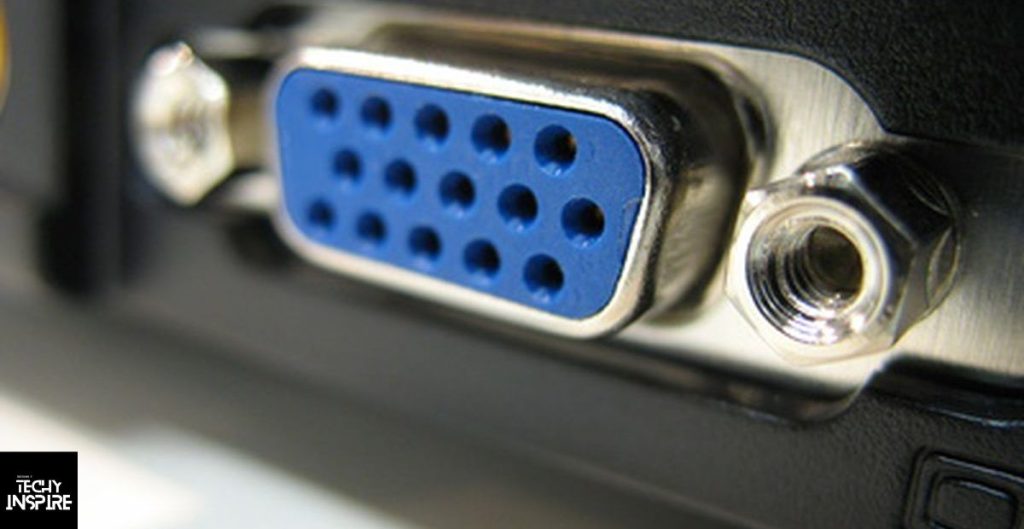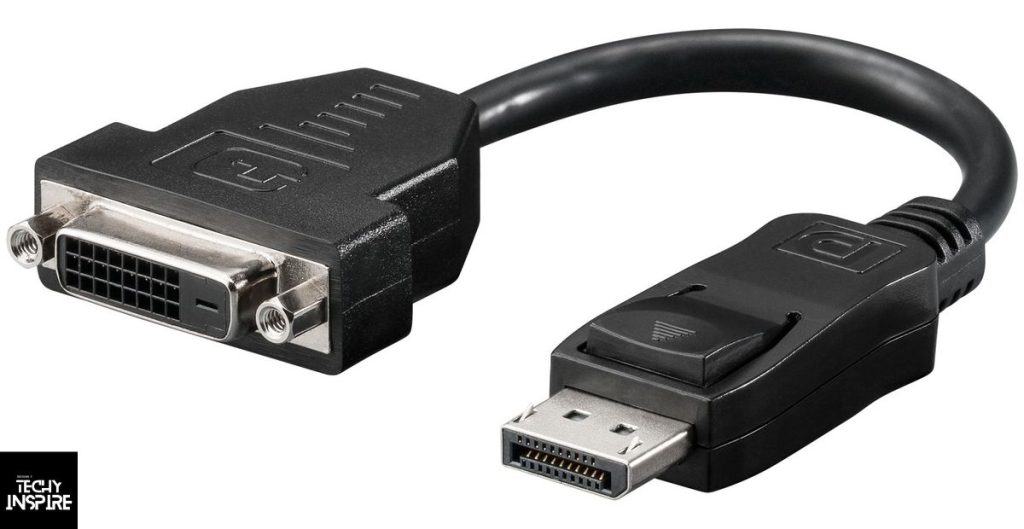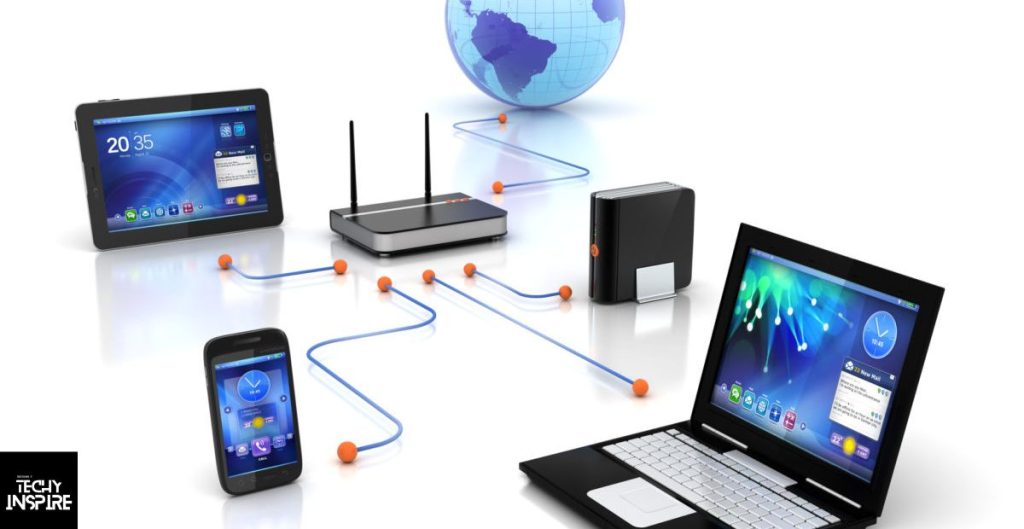Monitor interfaces and video input connectors have come a long way from just VGA. This in-depth guide covers the most common display interfaces, from analog VGA to digital HDMI, Display Port, and USB-C.
Common but Old:
Monitor with VGA port
The VGA (Video Graphics Array) port was the standard analog video connector for Personal Computers (PC) and laptops from the late 1980s through the 2000s. Most CRT (cathode ray tube) monitors supported the blue 15-pin VGA connector, which can transmit video with resolutions up to 1920×1200.
While VGA remains popular for legacy systems, it only supports standard definition resolutions and is an analog connection, so picture quality degrades over longer cable lengths. Modern LCD/LED monitors still include VGA ports for compatibility, but the digital alternatives like HDMI provide sharper images.
Monitor with DVI port
DVI (Digital Visual Interface) launched in the late 1990s as a replacement for VGA, supporting digital video for clearer images. The DVI-D (Digital only) version is ideal for flat panel LCD/LED monitors supporting resolutions up to 1920×1200 or higher.
DVI offered better picture quality than VGA but was still limited to a maximum resolution of 1920×1080 until dual-link DVI was introduced. It lacks audio support, so a separate audio cable was required. DVI is now obsolete for most applications thanks to improved digital connections like HDMI and Display Port.
Modern Types:
Monitor with HDMI port – the king of multimedia

HDMI (High-Definition Multimedia Interface) has become the most common video interface, appearing on nearly all modern displays including computer monitors, consumer electronics, and televisions.
HDMI supports resolutions from 720p all the way up to 8K at 60Hz, with support for HDR content and improved colors over DVI. As an all-digital connection, HDMI provides the best image quality. It also carries multichannel digital audio on the same cable for surround sound home theater setups.
Monitor with Display Port – only becomes ubiquitous
Display Port is the modern alternative to DVI/HDMI primarily used on PCs and higher-end monitors. It offers faster maximum bandwidth compared to HDMI, support for higher refresh rates beyond 60Hz, and multiple display configurations.
Display Port cables are also thinner and more flexible than HDMI. The connector is robust and less prone to damage. It’s becoming the preferred interface for high-resolution displays like 4K and high-end gaming monitors due to bandwidth and features. Display Port is also a requirement for accessories like Docks/Adapters supporting Thunderbolt/USB-C devices.
Monitor Connection Types
There are 6 main types of connectors that link a computer (graphics card) to a monitor:
- USB-C (Apple Thunderbolt-3) Connection
- HDMI V 1.2 and V 1.3 Connection
- HDMI V1.4 and V2 Connection
- Display Port Connection
- DVI Connector
- Mini DVI Connector
- VGA Connector
Common Display Interfaces Summary:
As computers have transitioned from analog to digital connections, various interfaces for linking a monitor have emerged over time. Here is a brief overview of the most prevalent:
VGA
As mentioned earlier, VGA was the long-time standard for analog connections but only supports low resolutions up to 1920×1080. It remains common for legacy systems.
DVI-D
The digital-only version of DVI launched as a higher quality successor to VGA. DVI maxes out at 1920×1080 and lacks audio support.
HDMI – The King of Multimedia
By far the most widespread interface, HDMI supports resolutions up to 8K at 60Hz as well as multichannel digital audio on a single cable. An excellent all-in-one solution.
HDMI Mini
A smaller version of the HDMI connector for portable devices. Provides the same capabilities as standard HDMI.
HDMI Micro
An even smaller micro HDMI port commonly found on smartphones.
Display Port
The preferred digital interface for high-end and gaming monitors due to bandwidth capabilities beyond HDMI 1.4. Also required for Thunderbolt/USB-C docks.
Thunderbolt
Apple’s Thunderbolt 3/USB-C port has become a versatile docking connection supporting video (up to two 4K displays or one 5K/8K display) as well as charging and peripheral connectivity.
USB Type C
The latest universal USB-C connector can also be used as a video interface on select laptops/devices, allowing a single cable to replace separate power/video/data cables.
DVI-I
A hybrid DVI port supporting both digital and analog connections. Rare these days.
Mini-DVI
A smaller version of DVI for older Apple MacBooks and Mac Minis.
Micro DVI
The smallest DVI connector variant.
Mini Display Port
Mini version of Display Port used pre-Thunderbolt by some PCs/laptops for smaller footprint.
Guide to the Commonly Used Monitor Display Ports

Now that we’ve covered the different interface types at a high level, let’s examine the most prevalent connections in more detail:
So what’s the difference between VGA, DVI, HDMI, Display Port, Mini Display Port and USB Type-C?
The following section provides a detailed comparison of these major interface types, including their strengths, weaknesses, resolutions supported, and other key specifications…
Here is a detailed comparison of some of the major monitor connection interfaces:
VGA
- Connector type: Blue 15-pin D-sub connector
- Maximum resolution: 1920×1080
- Connection type: Analog
- Additional capabilities: None, only transmits video signal
- Benefits: Universal compatibility due to long usage history
- Drawbacks: Low maximum resolution, prone to interference
DVI-D
- Connector type: 24-pin connector
- Maximum resolution: 1920×1080 (single link), higher with dual link
- Connection type: Digital
- Additional capabilities: None, no audio
- Benefits: Higher quality picture than VGA, digital signal
- Drawbacks: No audio, limited resolutions
HDMI
- Connector type: 19-pin HDMI-A connector
- Maximum resolution: Up to 8K resolutions @ 60Hz
- Connection type: Digital
- Additional capabilities: Multichannel digital audio, HDCP copy protection
- Benefits: Universal use on displays/TVs, high resolutions, audio
- Drawbacks: Large connector, incompatibility on older devices
Display Port
- Connector type: 20-pin mini Display Port or full-sized Display Port
- Maximum resolution: 8K resolution @ 60Hz
- Connection type: Digital
- Additional capabilities: Higher bandwidth than HDMI, multiple displays
- Benefits: Robust connector, higher bandwidth, multiple displays
- Drawbacks: Less common on older devices
Mini Display Port
- Same as Display Port but with smaller 16-pin connector
- Used on some earlier laptops/desktop GPUs
USB-C / Thunderbolt 3
- Connector type: 24-pin USB-C connector
- Maximum resolution: Dual 4K @ 60Hz or 5K/8K single external display
- Connection type: Digital
- Additional capabilities: Data transfer, networking, charging, Display Port video
- Benefits: Universal port replacing multiple cables
- Drawbacks: Requires compatible source device
Here’s a continuation of the guide with more detailed explanations:
Compare Monitor Connections
Now that we’ve examined the specifications of different connector types, let’s compare them:
HDMI VS Display Port:
- HDMI is more widely used on consumer displays and A/V devices due to universal adoption. It supports high resolutions up to 8K.
- Display Port offers higher bandwidth for higher refresh rates beyond 60Hz. It’s preferable for 4K gaming and multi-monitor setups.
- Newer HDMI versions are catching up to Display Port’s capabilities, so either works well for most users.
HDMI VS DVI:
- HDMI supports higher resolutions and integrated digital audio, making it a clear upgrade over DVI.
- DVI lacks audio support and is limited to 1080p maximum. It’s deprecated for most applications.
HDMI VS VGA:
- VGA only supports up to 1080p resolutions via analog connection and inferior picture quality compared to digital interfaces.
- HDMI provides significantly higher resolutions up to 8K digitally, along with integrated audio. It replaces VGA for all use cases.
HDMI VS USB-C:
- USB-C can also carry Display Port video signal and is becoming common on newer laptops with USB-C ports. However, it requires source device compatibility.
- HDMI is still more widely used on desktops and non-USB-C laptops. But USB-C is positioning itself as a universal do-it-all port.
In summary, unless you need legacy VGA or DVI support, HDMI and Display Port are excellent mainstream options for modern high-resolution monitors. USB-C is also emerging as the future universal cable standard.
HDMI
HDMI is currently the most widely used interface for consumer displays and A/V devices. Some key specs:
- HDMI 1.0 to 1.4 support resolutions up to 4K at 30Hz
- HDMI 2.0 increases bandwidth for 4K60, HDR, and HDCP 2.2 support
- HDMI 2.1 latest version enables 8K at 60Hz, 4K at 120Hz, and eARC for enhanced audio.
HDMI cables come in various speed ratings from Standard to High Speed to Ultra High Speed depending on resolutions. Make sure your cable’s rating matches or exceeds your device’s HDMI version for optimal performance.
Display Port
Display Port emerged as a digital alternative to DVI and has capabilities beyond HDMI in some use cases:
- Support for higher refresh rates up to 360Hz at lower resolutions
- Dual 4K monitors can be driven from a single port
- HBR3 mode allows 8K at 60Hz on latest standard
- Display Port offers simplified daisy chaining of multiple displays
- Cables are thinner and generally more durable than HDMI
So Display Port is preferred for high-refresh gaming monitors, multi-monitor workstations, and professional applications where bandwidth is crucial.
DVI, DVI to VGA Adapters
As discussed earlier, plain DVI connectors only support up to 1080p. It had its time but modern interfaces surpassed it.
DVI to VGA adapters are still useful for interfacing older graphics cards or projectors that only have a VGA port. Active adapters convert the digital DVI signal to VGA’s analog format.
Display Port to DVI Adapters

Similarly, Display Port to DVI dongles allow connecting a DVI-only monitor to a system with Display Port output. But native Display Port or HDMI interfaces are preferable wherever possible.
Cables and Adapters
For optimal performance, always use high quality cables rated for the resolution and HDMI/DP version of your interfaces. Monster, Cable Matters, and Amazon Basics make reliable options.
Also confirm Dongle/Adapters support the speed and features (HDR, HDCP etc) needed rather than just basic video alone. Let me know if any other topics need more explanation!
VGA
As the original PC display interface, VGA remains ubiquitous on older systems and projectors. However, its analog nature faces obsolescence as everything transitions digital.
Some VGA facts:
- Supported on nearly all displays made until mid-2000s
- Limited to 1920×1080 maximum resolution
- Prone to interference from nearby electrical devices
- Inferior picture quality compared to digital interfaces
Used mainly for legacy compatibility now rather than new purchases. But often the only option for really old hardware.
Types of Monitor Cables
To summarize the different types of cables used:
- VGA cables for analog VGA connections
- DVI cables for digital DVI connections
- HDMI cables for HDMI TV/Monitor interfaces
- Display Port cables for Connections to Display Port-equipped Displays
- USB-C cables for new generation universal do-it-all standard
Computers with All Digital Connections

Modern computers primarily rely on digital connections like HDMI, Display Port and Thunderbolt/USB-C. This allows them to drive multiple high-resolution monitors without degradation.
Some computers may only have mini Display Port or Thunderbolt and require an adapter cable. Make sure your monitors and dongles all support matching digital interface types.
Conclusion
To recap the various monitor port options – HDMI, Display Port and USB-C are the dominant well-rounded digital interfaces. VGA and DVI persist for legacy compatibility. Choose the right cable based on your monitor and computer’s available ports for optimal performance. Let me know if any part of the guide needs more clarification








